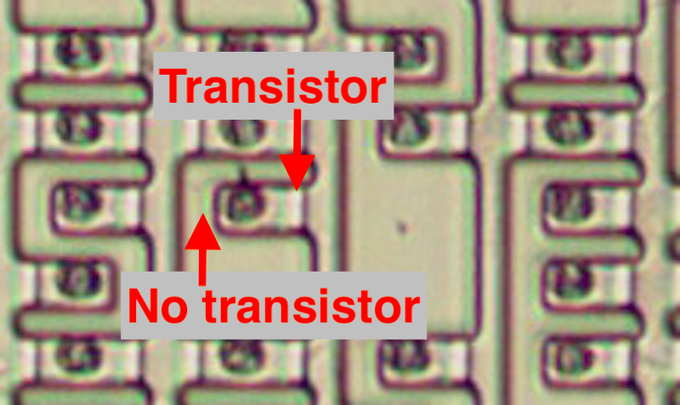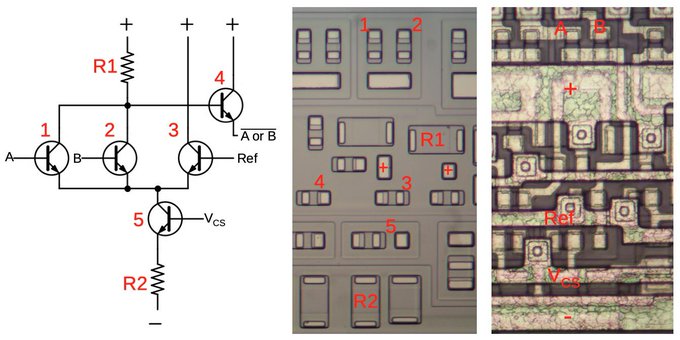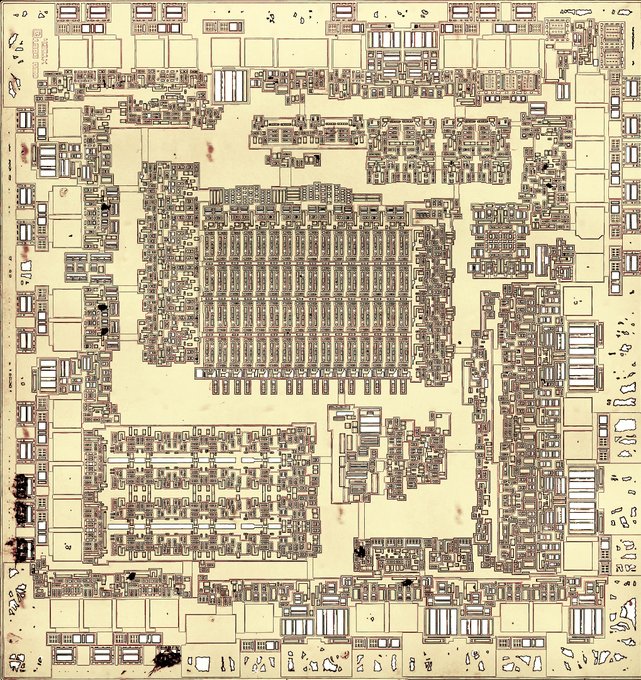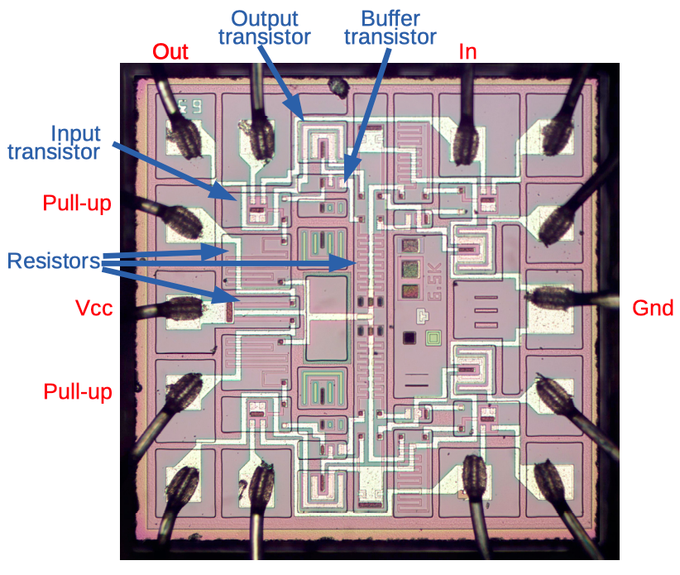I made a 3-D model to help clarify what's going on inside the module. PCB boards at the top and bottom with pins running between them. Blue and green capacitors, red resistors, black Zener diode.
I opened up vintage Intel 8086 and 8088 processors and looked at the microcode on the die. Bits are defined by the transistor pattern. The microcode is almost identical with just a few different bits. Bug fixes or changes to support the 8088's 8-bit bus? More analysis required.
In the 1970s, AMD's popular processor was the 4-bit Am2901. Multiple bit-slice chips could be combined for larger word sizes like 64 bits. Am2901 was used in minicomputers, F-16 plane, Battlezone video game. I opened one up and reverse-engineered its ALU: https://t.co/bBLoE9f2rN
I like the geometric layout of this chip from a Soyuz space clock, so I wrote a blog post explaining how it works. Although the Soviet Union cloned many Western chips, this NAND gate chip has some creative features. The clock is full of surface-mount TTL.
https://t.co/hCKYrECN1w
Nice, simple layout in this Soviet TTL logic chip. Many Soviet chips copied American ones, but the 134ЛА8 is entirely different from US chips. Quad open-collector NAND gates with two pull-up resistors included. The Soyuz space clock I reverse-engineered uses several of this chip.




















